Steve Howell reports on under-appreciated fall plumages.
It’s that time of year again...
Was the season named Fall for all the leaves that fall, or perhaps for all the feathers that fall during this season? Just think, without millions and trillions of feather-degrading bacteria we might be walking around be ankle-deep or locally knee-deep in ticklish feathers at this time of year!
A lot of our resident birds don’t look so pretty right now, like this Song Sparrow (or Antpitta?!) but molt is a critical part of their life cycle.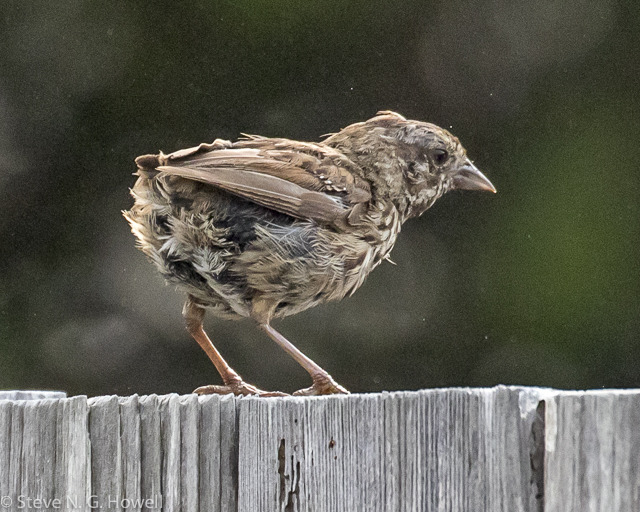
You don’t see too many photos of American Crows at the best of times, but even fewer when they look like this!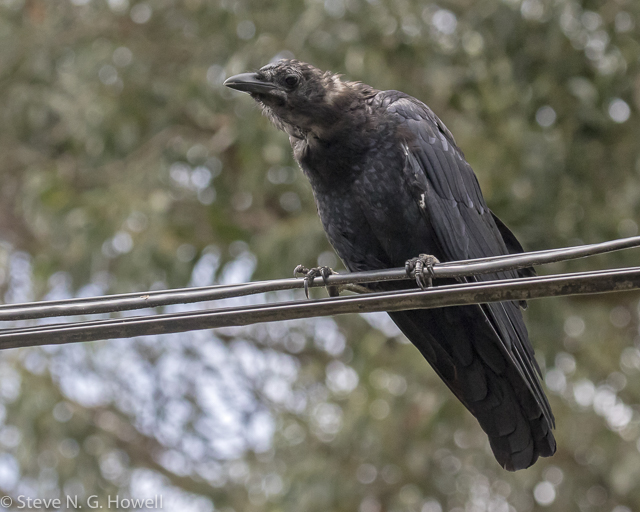
Even this fresh-looking Grasshopper Sparrow is molting—check out those bunched up growing secondaries, the last stage of its complete fall molt.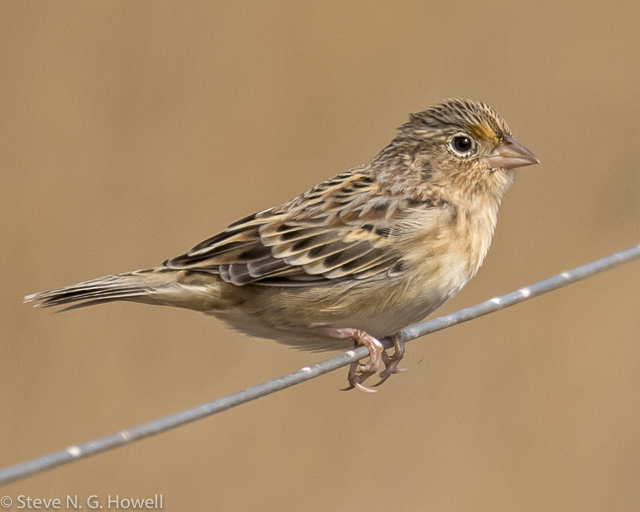
Wing molt is a more distinct on this American Robin...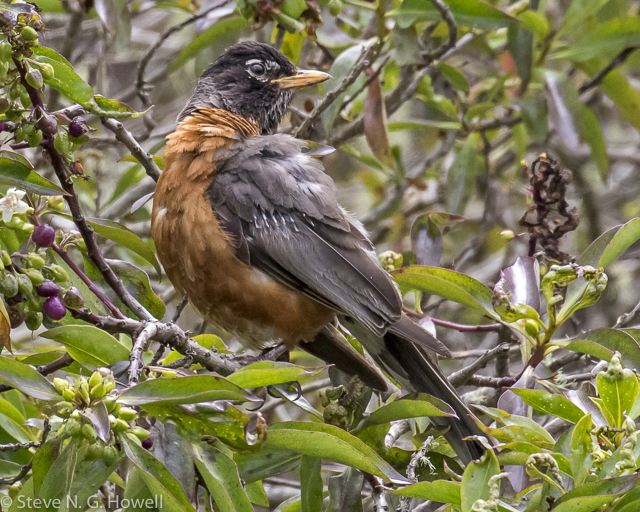
Even more so on this immature male Red-winged Blackbird...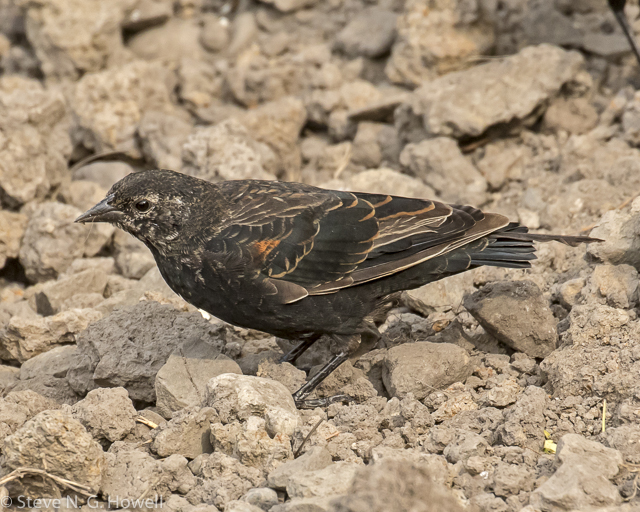
And this male Western Bluebird.
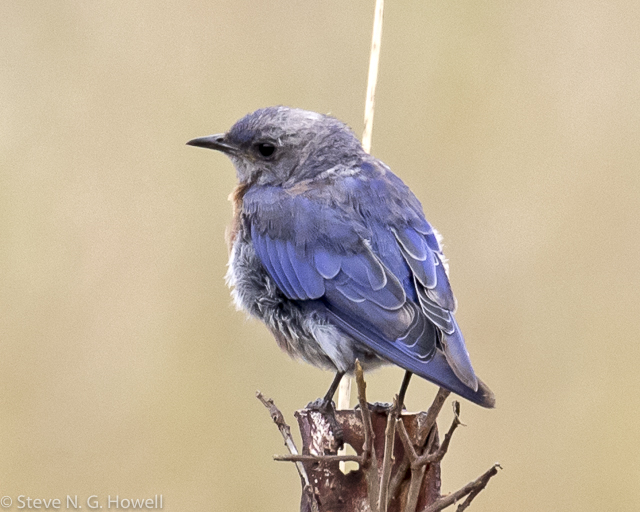
But just starting (those contrasting blacker feathers) on the wings of this young Violet-green Swallow.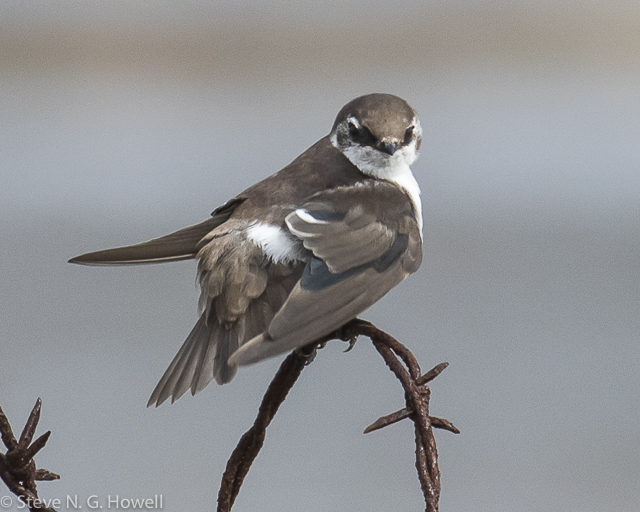
Some birds, on the other hand, are not molting, such as this juvenile Baird’s Sandpiper, ....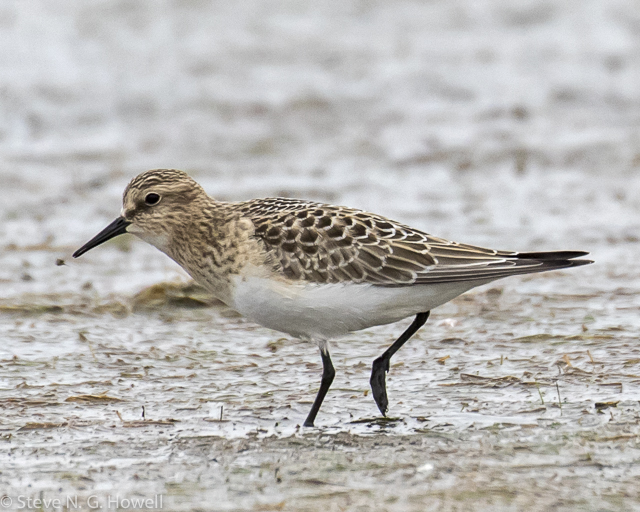
Or this juvenile Olive-sided Flycatcher.
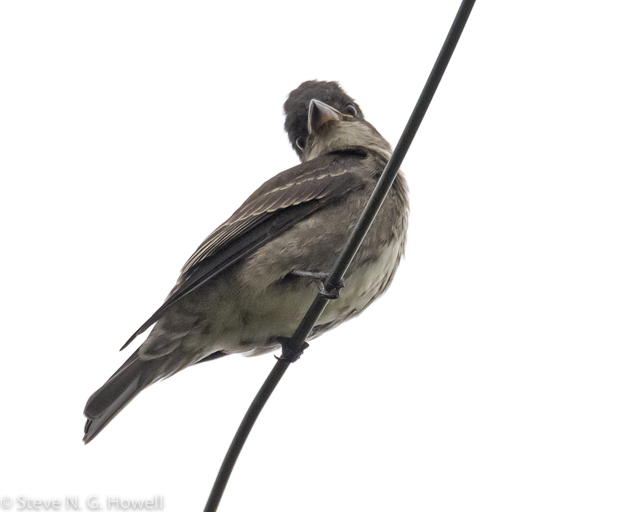
Or this stretching juvenile Purple Martin, who surely needs to exercise.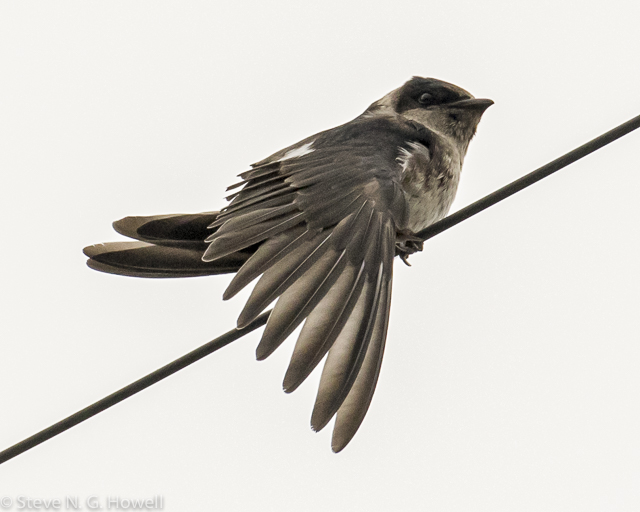
Because... these last three species are all long-distance migrants that grow a strong juvenile plumage and migrate off to as far away as Tierra del Fuego to undergo a mid-winter (= mid-summer down there) molt before they return here next spring with a completely new coat of feathers. So take a look around at the common birds, see which are molting and which aren’t, and take a moment to ponder their diverse and amazing lifestyles. And give thanks to countless unseen feather-degrading bacteria that we’re not all sneezing in a blizzard of feathers!
